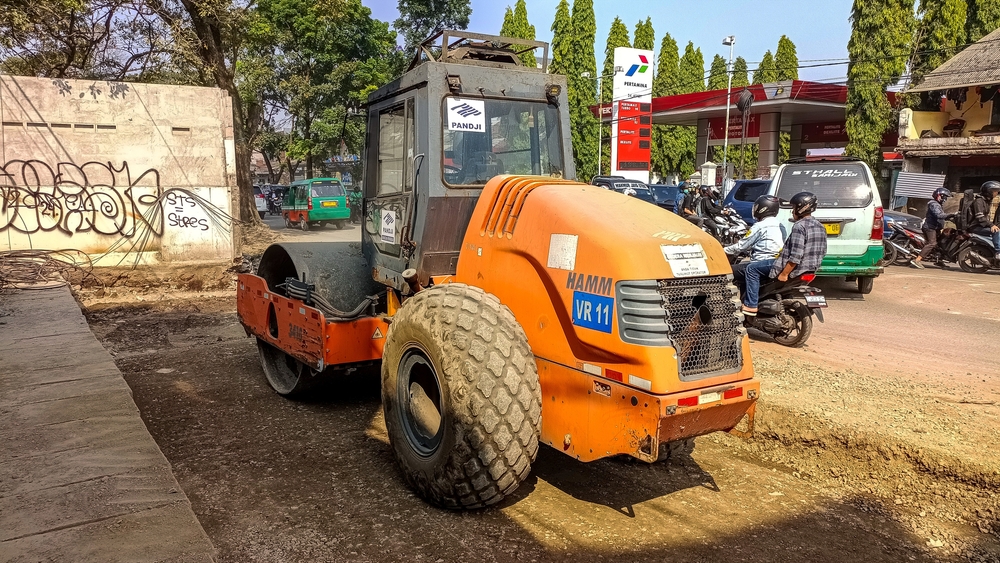Effective heavy equipment repair is the cornerstone of maintaining seamless operations in the construction and industrial sectors. It’s about safeguarding the operational integrity of essential equipment, from powerful bulldozers to robust excavators. Each piece of machinery is vital for project success, and understanding the nuances of their upkeep is key.
Throughout this guide, we will uncover the detailed insights, practical strategies, and innovative techniques necessary for proficient heavy equipment maintenance. Prepare to enhance your knowledge and skills, ensuring your machinery isn’t just functioning, but excelling in its performance.
Importance of Timely Heavy Equipment Maintenance
Timely maintenance play a pivotal role in minimizing downtime, a key factor that can significantly impact productivity and project timelines. When heavy equipment is not operational, it creates a domino effect, delaying projects and inflating costs due to idle labor and missed deadlines.
Proactive maintenance and timely repairs are about anticipating potential issues and addressing them before they escalate. This approach helps to avoid the more significant disruptions and expenses associated with major breakdowns.
Regular maintenance checks and swift repairs can extend the life of your machinery, ensuring that it performs efficiently and reliably over time.
Moreover, the long-term cost savings associated with proactive maintenance are substantial. Investing in heavy machinery maintenance can avoid the hefty costs of emergency fixes, equipment replacements, and lost productivity.
The key to maximizing productivity and ensuring the longevity of heavy equipment lies in the timely detection and resolution of potential issues, cementing the foundation for a more efficient, cost-effective, and successful operation.
Common Heavy Equipment Issues That Require Maintenance
Heavy equipment in the construction sector faces a range of challenges, crucial to be addressed promptly to avoid more extensive damage. These include:
1. Undercarriage Wear
- Track Damage
- Worn Sprockets
- Damaged Rollers
Undercarriage wear significantly affects the machine’s functionality due to the heavy loads and rough terrain encountered.
2. Hydraulic System Failures
- Leaks
- Hose Ruptures
- Pump Failures
Such failures can lead to decreased efficiency and pose safety hazards.
3. Engine Problems
- Overheating
- Oil Leaks
- Inefficient Fuel Consumption
Common in older or heavily used equipment, these issues impact operational efficiency.
4. Electrical Issues
- Faulty Wiring
- Dead Batteries
- Malfunctioning Sensors
These can result in operational failures and safety risks.
5. Wear and Tear on Attachments and Tools
- Buckets
- Shovels
- Blades
This affects the equipment’s ability to perform specific tasks effectively.
Regular inspections, maintenance schedules, and understanding wear and tear signs are essential in preventing minor issues from becoming major repairs, ensuring equipment operates efficiently and productively.
Diagnostic Tools and Techniques
The evolution of diagnostic tools and techniques has revolutionized heavy equipment maintenance, making the process more efficient and accurate. These advanced technologies play a crucial role in identifying issues quickly and precisely, streamlining the process.
1. Handheld Diagnostic Devices
Modern diagnostic tools include handheld devices that can be connected to the equipment’s onboard computer systems. These devices can read error codes, monitor performance metrics, and identify irregularities in the machine’s operation.
2 . Advanced Software
Advanced software is also used for diagnostic purposes, capable of analyzing data and providing detailed reports on the equipment’s health.
3. Thermal Imaging Cameras
Thermal imaging cameras are another innovative tool, used to detect overheating components, which can be indicative of deeper mechanical issues.
4. Vibration Analysis Equipment
Vibration analysis equipment helps in identifying imbalances or misalignments in the machinery, which could lead to significant damage if left unchecked.
5. Ultrasonic Testing
Ultrasonic testing is employed to detect flaws or cracks in materials that are not visible to the naked eye. This technique is particularly useful in assessing the structural integrity of components subjected to extreme stress.
These diagnostic tools enable technicians to conduct thorough inspections with greater precision, leading to more effective and targeted repairs. This accuracy not only saves time and resources but also enhances the overall efficiency and reliability of the equipment.
Efficient Processes
Efficient maintenance processes are crucial for minimizing downtime and ensuring the reliability of heavy equipment. A systematic approach to disassembly, troubleshooting, and reassembly can significantly optimize repair efficiency, regardless of the equipment type.
1. Disassembly
Begin with a thorough inspection to identify all issues. Document the disassembly process with notes and photographs to ensure that every component is reassembled correctly. Use the appropriate tools and follow the manufacturer’s guidelines to avoid damage to parts. Organize removed parts systematically to save time during reassembly.
2. Troubleshooting
Effective troubleshooting requires a deep understanding of the equipment and its operating principles. Utilize diagnostic tools to accurately identify the problem. Consult technical manuals, schematics, and expert advice when necessary. Addressing the root cause, rather than just the symptoms, is vital for a long-term solution.
3. Reassembly
Follow the documented disassembly process in reverse. Ensure that all components are clean, in good condition, and correctly aligned. Replace any worn or damaged parts with genuine or high-quality spare parts. After reassembly, conduct thorough testing to ensure that the equipment is functioning as intended.
Adhering to these best practices not only ensures the proper functioning of the equipment but also extends its operational lifespan. It is essential to continuously update skills and knowledge to stay abreast of new technologies and upkeep techniques in the evolving field of heavy equipment.
Safety Considerations in Heavy Equipment Maintenance
The importance of safety protocols in machinery maintenance cannot be overstated. Creating and maintaining a safe working environment is paramount to protect technicians and ensure the integrity of the process.
1. Personal Protective Equipment (PPE)
Technicians should always wear appropriate PPE, including helmets, safety glasses, gloves, and steel-toed boots. Hearing protection is crucial when working with loud machinery.
2. Workspace Safety
Keep the repair area well-ventilated, organized, and free of clutter to prevent accidents. Ensure that all tools and equipment are in good condition and used correctly. Implement safety signage and barriers around the repair area to warn others of potential hazards.
3. Lifting and Handling
Use proper lifting techniques and equipment when dealing with heavy components. Ensure that hoists, jacks, and other lifting devices are regularly inspected and certified for safety.
4. Chemical and Hazardous Material Safety
Follow proper procedures when handling oils, fuels, solvents, and other hazardous materials. Store these materials safely and dispose of them according to environmental regulations.
Emergency Preparedness
Have a well-defined emergency response plan in place. Ensure that all staff are trained in first aid, fire safety, and emergency procedures. Regularly inspect and maintain fire extinguishers and other safety equipment.
Conclusion
By implementing proactive maintenance, professionals can ensure their equipment operates at peak efficiency, reducing downtime and extending the equipment’s lifespan.
We encourage you to leverage these insights to not only refine your repair practices but also to contribute to the overall success and safety of your operations. Remember, effective heavy equipment maintenance is not just a technical task; it’s a strategic approach that can significantly impact your project’s bottom line.
Whether you’re looking for spare parts, expert advice, or innovative repair techniques, ESP is your go-to resource for all things related to heavy equipment and machinery. Visit our website to discover how we can support you in achieving operational excellence and surpassing your project goals.









